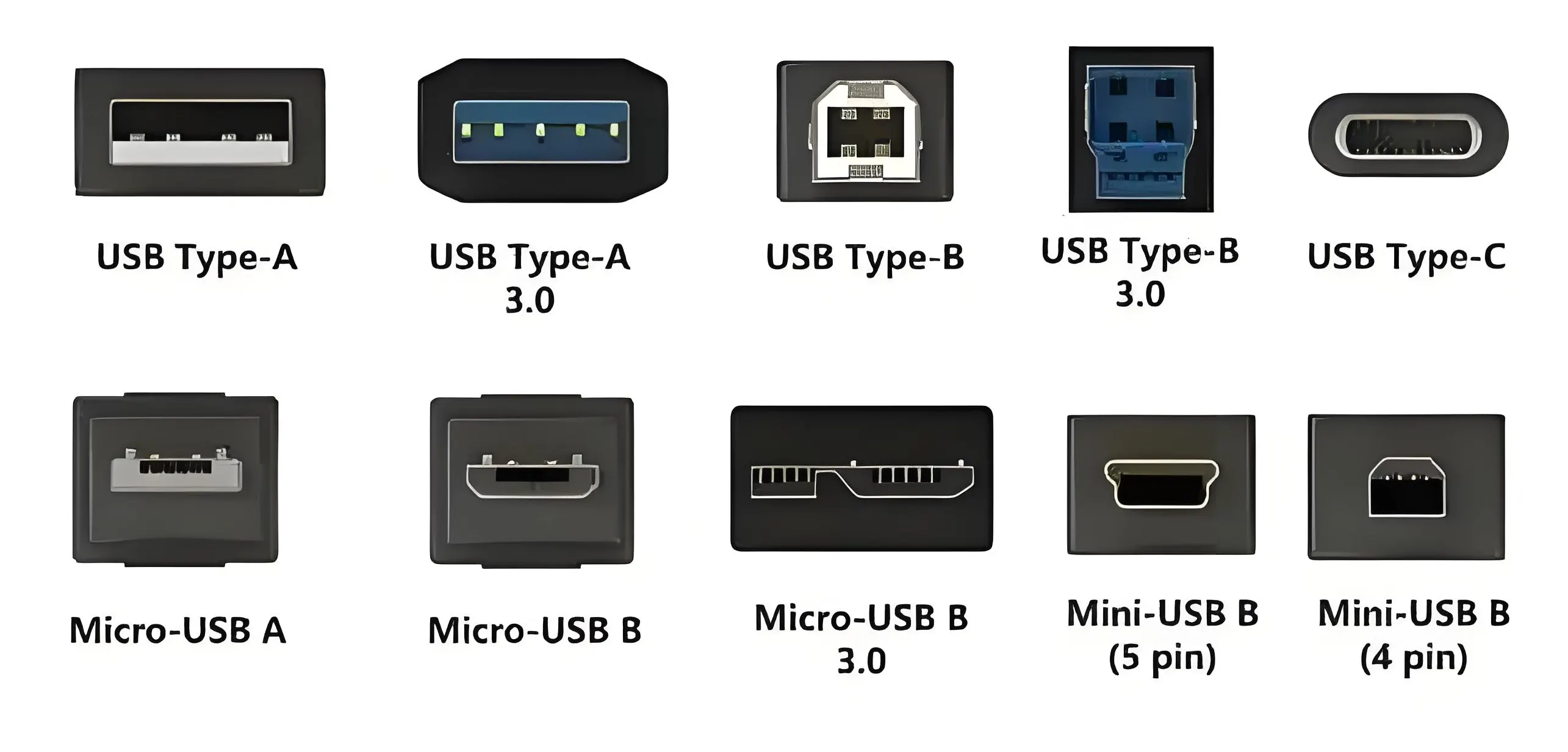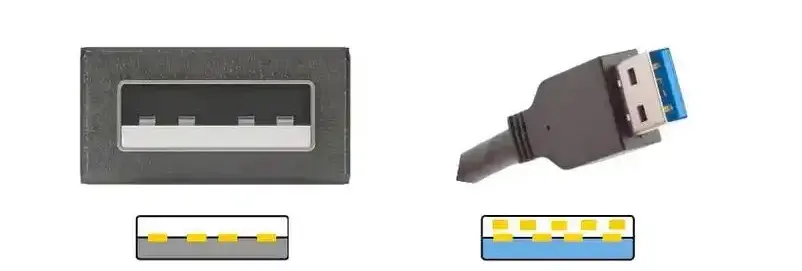What is USB?
USB, short for Universal Serial Bus, is a standardized interface for data transmission and power delivery.
It provides a universal connection between computers and peripheral devices, enabling seamless communication and power supply across different manufacturers and device types.
Before USB, various devices often required proprietary cables and connectors, creating a fragmented and inefficient setup. USB unified this interface standard.
Core Functions of USB:
- Data Transfer – Exchange of files and information between devices.
- Power Delivery – Charging devices or supplying operating power.
- Plug-and-Play – Immediate functionality upon connection; removal does not disrupt system operation.

Common USB Connector Types & Features:
- USB-A – Flat rectangular; used for PCs, flash drives, keyboards, and mice; most common, highly durable.
- USB-B – Square shape; printers, legacy external drives; primarily for larger devices.
- Mini-USB – Smaller, trapezoidal; older cameras, MP3 players; largely obsolete.
- Micro-USB – Compact, flat; legacy Android phones, cameras; cost-effective.
- USB-C – Symmetrical oval, reversible; latest smartphones, laptops, tablets; supports high-speed data transfer and high-power charging, replacing multiple other connectors.

USB Version Comparison:
- USB 1.1 – 12 Mbps; early standard, obsolete.
- USB 2.0 – 480 Mbps; widely adopted, ideal for general peripherals.
- USB 3.0 / 3.1 / 3.2 – 5–20 Gbps; high-speed, often identified by blue connector inserts.
- USB4 – 40 Gbps; unified specification with enhanced compatibility.
Key Considerations for Custom USB Cable Assemblies:
- Define Requirements – Specify USB version (2.0/3.x/Type-C), application (fast charging vs. data only).
- Select Proper Conductor Gauge – Use 20–22 AWG for power lines (fast charging), 26–28 AWG for data pairs.
- Ensure Adequate Conductor Count – High-speed and full-featured USB-C require additional conductors.
- Shielding Quality – High-speed lines require dual-layer shielding and twisted-pair differential signal routing.
- Connector & Build Quality – Choose high-grade materials, ensure solid solder joints, and incorporate strain relief at cable terminations.
About Kaweei
Kaweei specializes in manufacturing custom USB cable assemblies, supporting fast charging, high-speed data transmission, and a wide range of connector specifications. With reliable quality and flexible production capabilities, Kaweei delivers tailored connectivity solutions to meet diverse customer needs.
FAQ
1. What is a custom USB cable assembly?
A USB cable designed to meet specific needs, including connector type, length, data transfer, and charging capabilities.
2. How to choose the right USB version?
- USB 2.0: Standard peripherals, basic data transfer
- USB 3.x: High-speed data transfer
- USB4: Ultra-fast data and high-power charging
3. Why are conductor and shielding important?
Good conductors ensure proper charging, while quality shielding reduces interference for stable high-speed data.
4. Which USB connectors are supported?
USB-A, USB-B, Mini-USB, Micro-USB, and USB-C. Custom cables can combine multiple types.
5. Why choose Kaweei custom USB cables?
Kaweei offers reliable, high-quality cables for fast charging and high-speed data, tailored to your specific needs.


